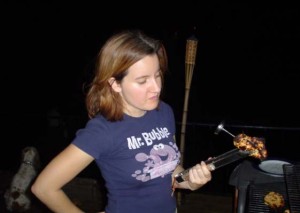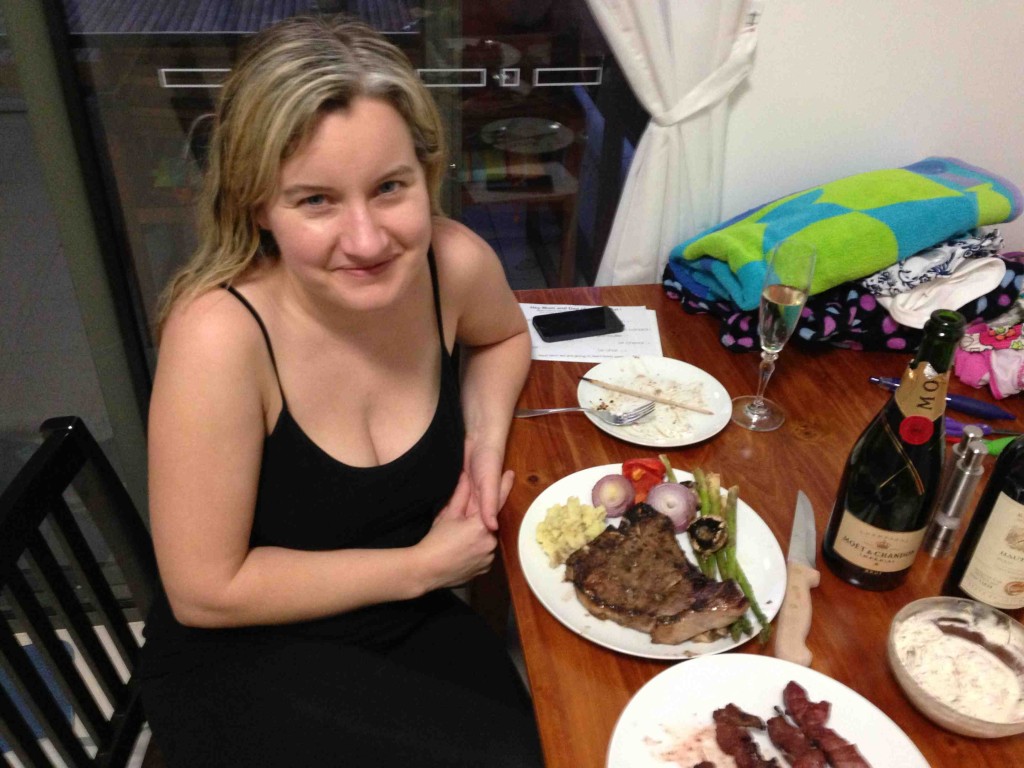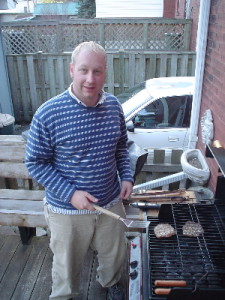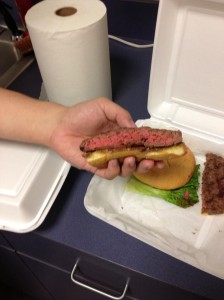Serena Gordon of HealthDay says food thermometers are now standard in her home after a brush with shiga-toxin producing E. coli nearly killed her. Story below:
As a health reporter, I’d heard plenty of stories about food contamination and had taken steps to make sure my family’s food was as safe as it could be. If I saw friends eating undercooked ground beef, I’d gently chide them about the possible dangers of  eating food that wasn’t prepared properly. Friends dubbed me the “food police.”
eating food that wasn’t prepared properly. Friends dubbed me the “food police.”
Contracting a foodborne illness was not something you’d expect would happen to me.
Nonetheless, three days after a barbecue with friends at my house, I woke up feeling sicker than I’d ever felt.
I had terrible heartburn and abdominal pain. I had cold sweats and a strange pain in my left arm, along with a feeling that something was terribly wrong. Then, the diarrhea started. Within an hour, I’d had more than 10 bowel movements. I couldn’t shake an incredible feeling of dread.
Then I began vomiting, forcefully and repeatedly. I felt myself quickly becoming disoriented. I managed to make it back to bed and, before I passed out, mumbled “9-1-1” to my husband.
At the hospital, blood tests showed that my kidneys and liver had shut down, and I was immediately admitted to the intensive care unit.
I knew I was dying. No one said so, but I could feel it. Later, my doctor told me that I had only a 15 percent chance of surviving that first night.
The diagnosis: two disorders caused by an infection with E. coli — hemolytic uremic syndrome and thrombotic thrombocytopenic purpura. In addition to kidney and liver failure, my red blood cells were now forming small clots and blocking small blood vessels. This caused bruises to form all over my body. My entire right arm was black and blue, as was half of my left arm, from where they tried to take blood from me.
The pain was excruciating. And, because my kidneys weren’t working, I was swollen almost beyond recognition. When they weighed me in the ICU, I had gained more than 20 pounds in fluid in three days. My fingers, which were so filled with fluid that they couldn’t bend, felt like they might just pop like a balloon.
My treatment included kidney dialysis and plasmapheresis, a procedure that removes blood from your body and separates the plasma from the blood. Then the rest of the blood is mixed with donated plasma and returned to the body. Though normally a cream color, the plasma removed from my body was black, apparently because of all the dead red blood cells. For almost two weeks, I spent four to eight hours a day hooked up to blood-sucking machines. I also received blood transfusions.
Eventually, though, the treatments worked. My blood cells started behaving normally, and my kidneys started functioning again. After nine days in the ICU and another 10 days in the hospital, I went home.
Recovery was a long and slow process. It took several months before most of my blood work came back normal. I saw countless doctors for lingering problems, which included a painful, reactive arthritis (a type of arthritis that can develop after a bad infection) and nerve damage from where the dialysis shunt had been placed. The arthritis persisted for about a year, but I did not need long-term kidney dialysis, and my health in time returned to normal — though no one can say definitively that I won’t have trouble down the road. I was grateful to have survived.
So how did all this happen to someone who’d been so careful to make sure that burgers were always well-cooked, with no pink meat. A doctor who specializes in infectious diseases explained that, even though the meat was gray and looked cooked, there must have been an area of the meat that hadn’t reached a high enough temperature to kill the bacteria.
At the time, food safety experts weren’t stressing the need to take the temperature of food to ensure that it’s cooked well. That’s changed. So have my precautions.
Perhaps not surprisingly, I now own several well-used food thermometers. And hamburgers at my house are now always cooked to 160 degrees at the thickest part of the meat.

 The Aussies had never seen quite a thing.
The Aussies had never seen quite a thing.












